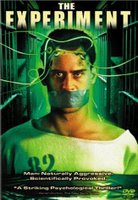2006 Ig Nobels Award Research in Hiccups, Poop, and Bad Writing
Here's my latest story, on National Geographic News:
 The finicky eating habits of dung beetles, the attraction of mosquitoes to Limburger cheese, and "digital rectal massage" as a cure for hiccups—these were among the findings that garnered researchers Ig Nobel awards yesterday.
The finicky eating habits of dung beetles, the attraction of mosquitoes to Limburger cheese, and "digital rectal massage" as a cure for hiccups—these were among the findings that garnered researchers Ig Nobel awards yesterday.
On the heels of the original Nobel prizes announced this week, the Ig Nobels held their 16th annual award ceremony at Harvard University in Cambridge, Massachusetts.
The winners all made discoveries that "make you laugh and then make you think," said Marc Abrahams, who started the Ig Nobels.
The awards were inspired by his work as editor of the Annals of Improbable Research, which publishes reports of odd findings that appeared first in reputable science journals as bona fide discoveries.
Hiccup Cure?
On a stage strewn with paper airplanes flung by the audience, the Ig Nobel winners received their awards.
A crowd favorite was the Medicine award, which went to doctors who probed the edges of medical practice to find a cure for incessant hiccups.
They found that as a last resort an effective remedy is a "digital rectal massage."
The first to use this technique was Francis Fesmire, a doctor at Erlanger Hospital in Chattanooga, Tennessee.
He treated a patient in the emergency room who suffered from hiccups every two seconds for three days.
"Initially gagging and tongue-pulling maneuvers were attempted with no change," Fesmire reported in the Annals of Emergency Medicine.
After various other attempts, Fesmire resorted to sticking his finger where the sun don't shine. Applying a slow circular motion stopped the hiccups within seconds.
"I want to make it clear, I've done this once to a patient," Fesmire said. "It worked, and I was pleased. I have no desire to do it again."
Fesmire, who walked out to receive his award with his curative digit held up high, shared the prize with a team of Israeli doctors who later put their fingers on the same cure.
Read more on the National Geographic News site.
 The finicky eating habits of dung beetles, the attraction of mosquitoes to Limburger cheese, and "digital rectal massage" as a cure for hiccups—these were among the findings that garnered researchers Ig Nobel awards yesterday.
The finicky eating habits of dung beetles, the attraction of mosquitoes to Limburger cheese, and "digital rectal massage" as a cure for hiccups—these were among the findings that garnered researchers Ig Nobel awards yesterday.On the heels of the original Nobel prizes announced this week, the Ig Nobels held their 16th annual award ceremony at Harvard University in Cambridge, Massachusetts.
The winners all made discoveries that "make you laugh and then make you think," said Marc Abrahams, who started the Ig Nobels.
The awards were inspired by his work as editor of the Annals of Improbable Research, which publishes reports of odd findings that appeared first in reputable science journals as bona fide discoveries.
Hiccup Cure?
On a stage strewn with paper airplanes flung by the audience, the Ig Nobel winners received their awards.
A crowd favorite was the Medicine award, which went to doctors who probed the edges of medical practice to find a cure for incessant hiccups.
They found that as a last resort an effective remedy is a "digital rectal massage."
The first to use this technique was Francis Fesmire, a doctor at Erlanger Hospital in Chattanooga, Tennessee.
He treated a patient in the emergency room who suffered from hiccups every two seconds for three days.
"Initially gagging and tongue-pulling maneuvers were attempted with no change," Fesmire reported in the Annals of Emergency Medicine.
After various other attempts, Fesmire resorted to sticking his finger where the sun don't shine. Applying a slow circular motion stopped the hiccups within seconds.
"I want to make it clear, I've done this once to a patient," Fesmire said. "It worked, and I was pleased. I have no desire to do it again."
Fesmire, who walked out to receive his award with his curative digit held up high, shared the prize with a team of Israeli doctors who later put their fingers on the same cure.
Read more on the National Geographic News site.













0 Comments:
Post a Comment
<< Home